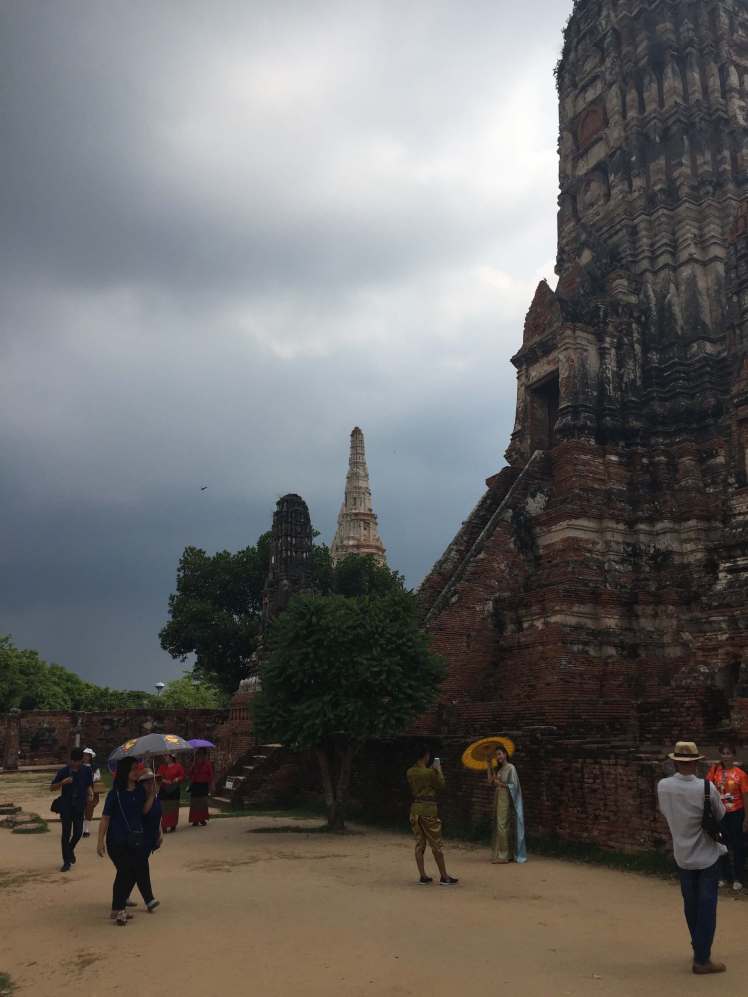After marveling at the scale and ingenuity of the temples of Angkor for three full days, I had a mild case of a condition known among travelers in Southeast Asia as “temple fatigue”. Were any other temples even worth seeing after Angkor Wat? As it turns out, though, the Khmer Empire did not exist in a vacuum, and there are other ancient capital cities that left their own mark on the region. After a break in Bangkok and Singapore from the exhausting sightseeing routine, I headed north in Thailand to visit two other once-great cities: Sukhothai and Ayutthaya.
Sukhothai
The modern-day towns of Sukhothai, in northwestern Thailand, and Ayutthaya, just north of Bangkok, are rather mundane provincial capitals with wide streets and a slow pace of life. Sukhothai, straddling the Yom River near the foothills of Thailand’s northern mountains, was the capital of the Sukhothai Kingdom from the 13th to the 15th centuries, making it contemporary with the latter part of the Khmer Empire. The word Sukhothai means “dawn of happiness”, which seems appropriate given that the Sukhothai Kingdom is considered to be the start of the Thai nation, and Thailand is often nicknamed the “land of smiles”. At its peak, Sukhothai’s control extended over much of modern-day Thailand.
The ruins of Sukhothai are concentrated in and around a walled area a short distance outside the modern city of Sukhothai, similar to Angkor’s location outside Siem Reap. However, rather than hiding in a natural jungle setting, the Sukhothai Historical Park is beautifully landscaped and linked together with a network of tree-lined bike paths. In its day, Sukhothai was a much smaller city than Angkor, so I was able to visit most of the main sites in just a few hours. Though most of the remaining structures are religious in nature, there are also sites within Sukhothai with evidence of other structures, such as kilns and a royal palace.






Ayutthaya
As the Khmer Empire and the Sukhothai Kingdom gradually weakened, another power rose to prominence between them. The city was built on an island at the confluence of the Chao Phraya, Pasak, and Lopburi rivers, which form a natural defence around a fairly large area. Though Buddhism was firmly established in Southeast Asia by the time Ayutthaya came to power, many elements of Hinduism were, and still are, evident in the culture and religious traditions of the Buddhist majority. For example, one of the most important Hindu texts is the epic poem Ramayana, in which the Indian city of Ayodhya is considered to be the birthplace of the god Rama. During the Ayutthaya Kingdom, the Ramayana was adapted to a Thai context and renamed the Ramakien, with Ayutthaya taking the place of Ayodhya.
As I’m used to doing by now, I explored Ayutthaya by bike. Aside from a steep bridge and a few monsoon downpours, the cycling was pretty easy because the city is flat and not very densely built. Unlike at Angkor and Sukhothai, the modern city of Ayutthaya occupies the same space as the ancient city, so the ruins are scattered throughout the city itself rather than being concentrated in a separate area.









Visiting the remains of these ancient capital cities, I find it interesting to learn about these kingdoms that I had no idea existed before. Sukhothai and Ayutthaya are both listed as World Heritage Sites by UNESCO, but they are certainly not anything I learned about in school! It is also fun to see how each city had its own unique architectural style, even though they were clearly influenced by one another. Though the scale of the ruins at Sukhothai and Ayutthaya is not nearly as grand as at Angkor, these cities played an important role in the early development of Thailand. And, judging by the number of Thais I saw praying among the ruins, they still play a role in the identity of modern Thailand.

Just did the Ayutthaya tour and that was the highlight of my Thailand trip! Check my blog if you have time I have posts on Thailand. BTW great pictures and the history. I did not get time to visit Sukhothai though
LikeLiked by 1 person
Cool, I’ll check it out! I’m glad you liked my post!
LikeLike